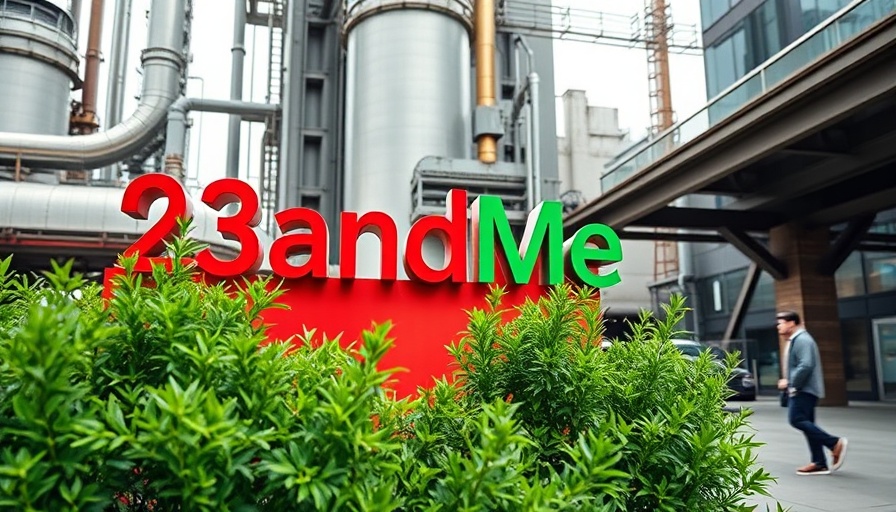
23andMe's Tumultuous Journey: Understanding the Downfall
The recent news that DNA testing company 23andMe has filed for Chapter 11 bankruptcy protection shocked many in the biotechnology sector. Founded with the promise of unlocking the secrets of the human genome for consumers, 23andMe's journey has been marred by financial turmoil and operational challenges, culminating in a dramatic plunge from its peak market valuation of $6 billion. With its co-founder and CEO Anne Wojcicki resigning to pursue an independent bid for the failing company, one might wonder what led to this downward spiral and what implications it carries for the biotech industry as a whole.
Financial Mismanagement and Market Pressures
Despite the initial excitement surrounding its public listing in 2021, 23andMe struggled to turn a profit, addressing increasing operational costs and market pressures. The rapid decline in stock price—down more than 99%—signifies not only a loss of investor confidence but also reveals the broader economic climate's impact on health-tech startups. According to a recent analysis, companies that were once considered innovative disruptors in the tech space are now grappling with oversaturated markets and high operational expenses, further complicating their financial sustainability.
The Aftermath of the Cyberattack
One pivotal moment in 23andMe’s decline came in 2023, when the company suffered a massive data breach. Nearly 7 million customers had their personal genetic data compromised, leading to the company facing legal repercussions, including a $30 million settlement. This breach not only resulted in financial strain due to compensation but also severely harmed the company's reputation, as trust is paramount in the biotech industry. In an age where data privacy concerns are at an all-time high, such incidents can be catastrophic, leading to a drop in user engagement and overall service uptake.
The Road Ahead: What’s Next for 23andMe?
The adoption of Chapter 11 is intended to facilitate a court-supervised sale process, providing a potential lifeline for restructuring the company’s assets to maximize value. This process can also pave the way for new leadership and reinvigorated strategies that might restore consumer and market confidence. Competitors in the biotech field are keenly observing how this scenario unfolds, as it could set a precedent for future actions taken by struggling firms.
Implications for the Biotech Industry
As 23andMe attempts to navigate its insolvency, it brings to light several questions regarding the viability of direct-to-consumer genomics businesses. Analysts suggest that the sector may require a more cautious approach, focusing on sustainable growth strategies and ensuring robust cybersecurity measures. The bankruptcy of such a pioneer could deter new investments into genetic research and testing, prompting more stringent regulatory scrutiny over data protection and business practices industry-wide.
Looking Beyond: Consumer Sentiment
The impact of 23andMe’s troubles extends beyond business metrics—it touches on consumer sentiment toward personal genomics. As the public seeks transparency and security regarding their genetic information, companies must prioritize building trust along with technological advancement. Current and potential users might become increasingly hesitant to engage with genetic testing companies if they perceive ongoing instability and unresolved privacy concerns.
In summary, the story of 23andMe serves as a cautionary tale for similar tech companies teetering on the edge of profitless growth. By seeking to understand the lessons from this situation, individuals in the biotech industry—be they entrepreneurs, investors, or consumers—can prepare for future developments and refine their strategies to avoid similar fates.
For individuals interested in the evolving landscape of biotechnology and its impacts on personal health and data security, it’s essential to stay informed about the industry's trajectory and trends. As discussed, 23andMe's restructuring could influence broader market dynamics, highlighting the need for ongoing vigilance and adaptation.
 Add Row
Add Row  Add
Add 



Write A Comment